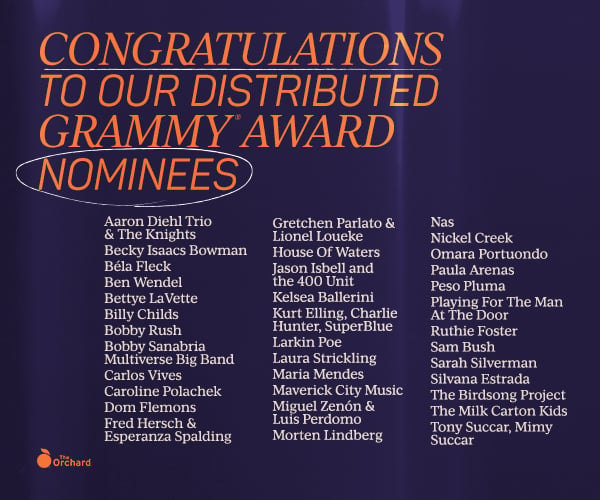Max Martin’s hit rate on the US Hot 100 is something to behold.
Starting with Britney Spears’ ...Baby One More Time in 1999, the past two decades have seen the Swedish songwriter and producer write or co-write 25 US No.1s, including smash singles like, I Kissed a Girl by Katy Perry, Can’t Feel My Face by The Weeknd and, My Universe by Coldplay and BTS.
Other artists he’s credited as a writer on US No.1 songs for include Justin Timberlake, Taylor Swift, NSYNC and Kelly Clarkson.
According to Billboard, Martin is the songwriter with the third-most US No.1 hits behind Beatles legends Paul McCartney (32) and John Lennon (26).
Max Martin’s use of various songwriting techniques, from creating melodic previews of hooks to building infectious climaxes, form an overarching approach to writing songs known in the songwriting community as ‘Melodic Math’.
Pop music researcher and Top40 Theory founder Asaf Peres tells us he uses the term as shorthand to describe Max Martin’s entire songwriting toolbox.
Peres, an expert on Max Martin’s songwriting techniques, and a consultant to record labels, songwriters, producers and artists, has a PhD in Music Theory, with a specialism in pop music.
He founded Top40 Theory in 2018 as a platform to break down various aspects of hit songs and explain music theory concepts.
After he first started posting hit song breakdowns on social media, Peres says that he started getting noticed by some “key figures” in the pop world.
“Within the span of a couple of months, [producer] Ian Kirkpatrick made an Instagram story about my breakdown of [Dua Lipa’s] New Rules, Charlie Puth retweeted a graph I made about How Long, and both Starrah and Jason Evigan reposted my breakdown of Girls Like You,” says Peres.
“I was getting emails from label executives and managers, and hit songwriters were DMing me asking me to do breakdowns of their songs. I was also being hired for consulting gigs. It was all very exciting.”
Amongst the industry figures to commend Peres’ research is hit songwriter Dan Wilson, who is cited on the Top40 Theory website as calling the platform “a treasure trove of insights into how pop music is made and how it works”.

Peres says that he decided to study Max Martin’s songwriting specifically because the hitmaker is “proof of concept that there are musical and psychological principles that transcend trends”.
“The fact that he can continuously make No.1 hits over 25+ years, when 3-5 years is considered an “era” in pop, shows that he has an understanding of how the human brain interacts with music on a fundamental level,” suggests Peres.
Peres has distilled his knowledge of Max Martin’s songwriting approach into a “Melodic Math Course“, which he tells MBW is “primarily designed for professional songwriters and those on the path to becoming professionals”. He says he’s also in the process of developing customized versions of the course for publishers and managers.
Students on Peres’ course can expect to learn techniques and concepts like tension and release, recycling, melodic previews and more.
“My main goal with Top40 Theory was to reach beyond academia and to create a type of music theory that is relevant, accessible, and useful to today’s songwriters,” explains Peres.
Commenting on his Melodic Math Course specifically, Peres says that, “I truly believe that any songwriter who masters Max Martin’s toolbox will dramatically improve their ‘batting average’ as a songwriter”.
Here, Asaf Peres explains how Max Martin puts these tools into action…
What is Melodic Math, and when was the term first coined?
I’m not sure that Max has ever used that term publicly, but it has been attributed to him by some of his frequent collaborators, and I believe it was popularized by John Seabrook’s book, The Song Machine.
I use the term “melodic math” as shorthand for Max Martin’s entire songwriting toolbox. And in that sense, it’s a bit of a misnomer, because it’s a lot more about human psychology than it is about math, although there are some math-y parts to it. It’s also not exclusively about melody. I mean, melody is certainly at the core of it, but it also can’t be separated from everything it interacts with – the lyrics, the chords, the production, the sound, the artist’s delivery, etc.
To me, melodic math is an approach to songwriting that centers [on] human psychology. It’s a set of creative techniques that are designed to help the listener feel an instant connection with the song and the artist. The listener is not supposed to be consciously aware of these techniques. For example, most people don’t consciously know that in Katy Perry’s “E.T.”, the verse and chorus melodies are identical. That’s because they get distracted by the intervening pre-chorus, the different production, different chord progression, different lyrics, etc. Those distractions are intentional. If the listener was aware of this technical fact, it might take them away from the emotional experience of the song and into the intellectual experience, and the intellectual is never as deep and intense as the emotional. By making the techniques target the subconscious mind of the listener, we are helping them enjoy the song on a visceral level.
How does Max Martin apply this Melodic Math formula to writing melodies and could you use a couple of examples of his popular songs to illustrate how?
I don’t think of melodic math as a formula. In my opinion, a formula for making hit songs cannot exist. Imagine that such a formula did exist. Now imagine that it leaked to the songwriter community, and thousands of songwriters wrote and released songs based on this formula. It’s impossible to have so many simultaneous hit songs! You have to stand out somehow, and that has to come from you as the songwriter and artist, not from some blueprint. Even Max has non-hit songs!
As for Max’s approach to writing melodies, there is no one rule that he follows every time, but there are some things he does frequently. I think structure is very important to him. He will often design phrases that have an internal tension-release scheme. He will also frequently save the highest note for the second half of a section. Primarily, though, I think he cares the most about how the different melodies in the song interact with each other and with the other elements of the song. How do I give my strongest hook the most real-estate without overdoing it and boring the listener? How do I make it easy for the listener to memorize these melodies? How do I create strong contrasts? So, Max’s melodies don’t live in a vacuum. Once one melody is created, it influences the creation process of the other melodies.
Where do lyrics (syllables, words, and their meaning) fit into Max Martin’s songwriting formula toolbox?
I think Max recognizes, like most hitmakers, the importance of a great lyrical concept to the success of a song, despite some myths that he only cares about melody. This is illustrated in a story he told at his Polar Prize interview about the conception of Taylor Swift’s We Are Never Ever Getting Back Together.
Having said that, there is also the technical side of the lyrics. In the course we talk about several ways Max uses lyrics to make the song more memorable.
One example is what I call the “Glue Hook”, which is the lyrical counterpart of the melodic preview. Essentially, he will use the same lyric in different sections to create a sense of familiarity and catchiness. For example, In Kelly Clarkson’s “Since You’ve Been Gone”, the title phrase is heard in both the verse and the chorus. Same thing happens in “I Want It That Way” by the Backstreet boys.
Max also uses lyrics to balance repetition or changes in patterns. For example, in the bridge of Lizzo’s 2 Be Loved there’s a pattern of continuous 3-beat phrases over the 4/4 meter.
The lyrics change from one phrase to the next, but when the rhythmic pattern is broken and a phrase gets a 4-beat ‘slot’, that’s where the lyrics repeat for the first time.
The first time we hear the lyric “Think you like that” is the last time that pattern is kept, and when she repeats the same lyric, an extra beat of space is added before she continues to “When I clap back like that”.
How about arrangement, what are the ‘rules’ or guidelines songwriters should follow if they want to structure their songs like a Max Martin hit using the melodic math formula?
Just to reiterate, there are no rules. The toolbox is there to provide creative opportunities, and mastering the toolbox means feeling comfortable deciding when to use or not to use certain tools, even though there are certain things that Max does more frequently than others.
Structure is one of the biggest modules in my course, because there are so many aspects of it to break down. From the big picture of building a series of growing climaxes down to the structuring of a melodic phrase.
One key element of Max’s approach to structure is to create a stark contrast between adjacent sections. Again, that is a major part of the psychological approach to songwriting. After you’ve repeated something for a while, things can become too predictable and a listener can start zoning out. Sharp contrasts that happen at the starting point of a new section serve a purpose – they ‘wake up’ the listener and re-focus their attention to the new elements.
The contrasts are often in the vocal pitch range, the vocal rhythm, the lyrics, the production. There usually will be several contrasting elements. But there will also be one or two things that are kept from the previous section to keep the listener oriented.
What are melodic previews, and how central are these to Max Martin’s songwriting? Could you use a couple of examples of his songs to explain how they’re used?
In a lot of Max’s biggest hits, he takes a fragment of the chorus’s melody and “plants” it in the verse. For example, in The Weeknd’s Save Your Tears, the lyric “crowded room” is melodically identical to “-nother day” in the chorus.
In Katy Perry’s Teenage Dream, the melody of “You think I’m pretty” in the verse is taken from “feel like I’m livin’ a…” in the chorus. There are countless examples of Max doing this, and those examples are vastly overrepresented in his most iconic hits compared to his lower-charting songs, which suggests that the impact of this technique on the commercial success of the song may be significant.
The melodic preview is perhaps the best representative of the psychological nature of Max’s creative approach. 99% of listeners will never consciously notice those previews, but it helps them feel a sense of familiarity and an instant connection to the song.
Max isn’t the only one who uses melodic previews, but over the last 25 years or so, he has used it more consistently and with more success than anyone. I do notice a growing tendency to use them among other songwriters in the last couple of years, even without Max being involved. You can hear it in Taylor Swift’s “Anti-Hero”, in “Unholy” by Sam Smith and Kim Petras, and if you listen closely, you might even pick it up in SZA’s “Nobody Gets Me”.
Where does production (choice of sounds, effects, mixing etc) fit into Max Martin’s songwriting formula?
One thing that Max cares about a lot, as I mentioned earlier, is creating growing climaxes. Typically a second chorus will be bigger than the first, and a final chorus will be the biggest. In the final chorus, he will often juxtapose a melody from a different section over the main chorus melody, like he and Taylor Swift do in Delicate. Or sometimes he will use a different section as a B-part in a “mega-chorus”, like he does with Ariana Grande in No Tears Left to Cry.
Music Business Worldwide




